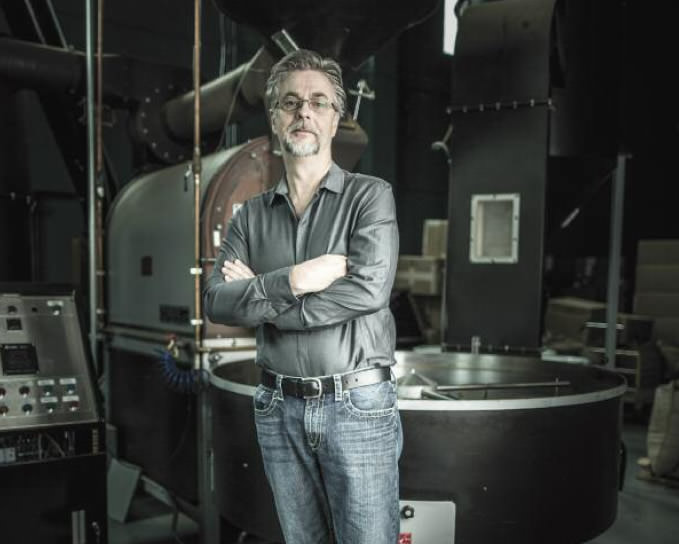drinkable reno tahoe
THE ART AND SCIENCE OF ROASTOLOGY
Creating the perfect cup of coffee that’s sipped around the world.
WRITTEN BY DAVE PRESTON
PHOTOS BY JAMIE KINGHAM
Carl Staub is fun to talk with, if you have a degree in chemistry and applied physics. But then again, he believes that’s what it takes to roast coffee the right way.
“Roasting coffee beans is both an art and science. There are some 860-plus constituents (chemical compounds three times more prevalent in coffee than in wine) that make this one of the most complex beverages in the world,” Staub says.
With a degree in electrical engineering, patents for his inventions, a remarkably discerning palate, and a true passion for what he does, Staub has made his Reno-based company, Agtron, one of the most celebrated in the coffee world for the development of its roasting system. His proprietary technology is used in 39 countries, and Staub’s analyzer is used by the biggest names on the planet when it comes to roasting.
Coffee has been around since the time of the Romans, and frequently was banned because it was believed to be “Satan’s drink,” until the 17th century when Pope Clement VIII determined that blessing coffee would “confound Satan,” and a daily coffee hour was instituted.
Today, it’s more than a morning drink; coffee truly is part of our culture. Where would we be without our double mocha, nonfat, no whip in the morning? Today, the global coffee industry earns an estimated $60 billion annually; with more than 400 billion cups served around the globe daily, coffee is the world’s most popular beverage and is ranked the second most valuable commodity after oil.
Beans Versus Grapes
Staub finds coffee beans and wine grapes a natural comparison.
“Similar to grapes used to make wine, coffee bean characteristics vary significantly as a result of varietal, terroir (soil and climate), harvest, and growing technique,” he explains. “It takes a skilled craftsperson with a lot of experience to bring out the best qualities of the coffee beans during the roasting process.”
A master roaster truly is an artisan. Cupping is a professional technique for evaluating the coffee’s fragrance, aroma, taste, body, and aftertaste following roasting and before it goes to market. This still is performed by cuppers and accepted as a way of rating coffee.
Roasting Analysis
Twenty years ago, Staub changed the roasting process with his spectrum analyzer. This device was designed specifically for high-resolution analysis of the degree of roast, bake, or fry; fruit maturity (e.g., coffee beans); and color/appearance variations. It’s where technology meets artisanship.
“What the analyzer did was to put some very specific controls on the roasting process,” he says. “We literally went from zero controls with the cuppers’ approach to ‘hyper-technical’ controls with the analyzer.”
In a nutshell, the coffee roaster performs one of the most critical and essential steps in creating great coffee. The roasting process is responsible for developing and bringing out the full flavor of the coffee bean.
Taste experiences with coffee can range from one-dimensional, as in a single varietal, to rich and complex, which is found in some blends with taste elements described as winey, earthy, sweet, nutty, smoky, or spicy.
Global Reach
Staub brings roasters from around the world to Reno for classes on roasting. He is ever mindful of the knowledge and age of his pupils.
“Some of these people have been doing this for most of their adult lives (40-plus years),” he says, “and what I try to accomplish is to show them how this technology can help them improve on their products.”
It’s been said coffee is far more than a beverage. It is an invitation to life, disguised as a cup of warm liquid. It’s a trumpet wake-up call or a gentle rousing hand on your shoulder. Coffee is an experience, an offer, a rite of passage, and a good excuse to get together.
But in an industry slow to adapt to change, involving the most complex beverage in the world, is it even possible to truly perfect the coffee-roasting process?
Maybe not, but using the tool he devised through sound science, Staub has achieved his ultimate goal: to make a great cup of joe.
Dave Preston has been an epicurean lifestyle journalist working in radio, TV, and print for more than 35 years. He has called Northern Nevada his home since leaving San Francisco in 2001. Preston also is the executive director of the High Sierra Chefs Association and a board member of the American Culinary Federation, as well as a culinary instructor at Academy of Arts, Careers and Technology in Reno.
Resources
For more details on Agtron, visit http://www.Agtron.net.


